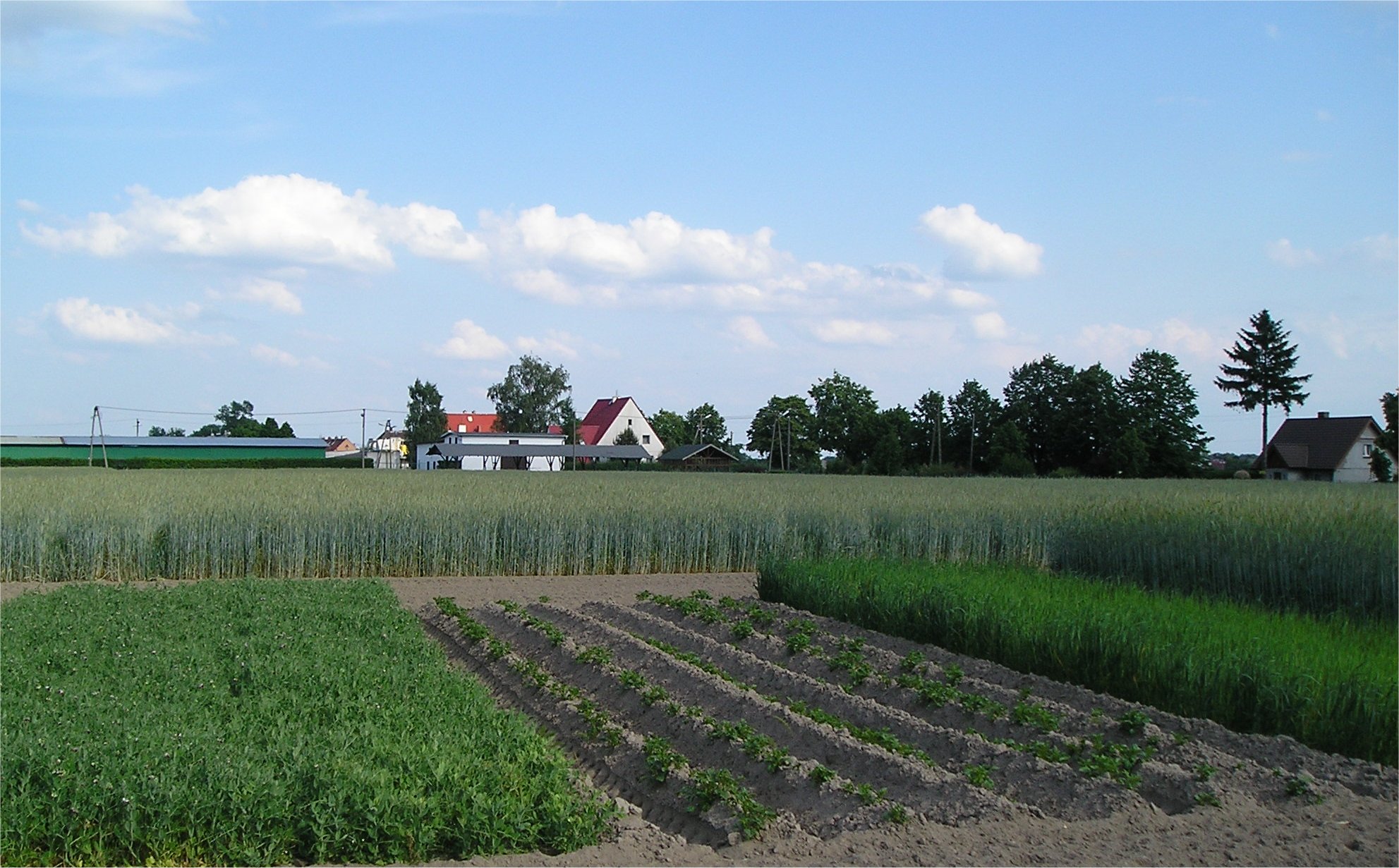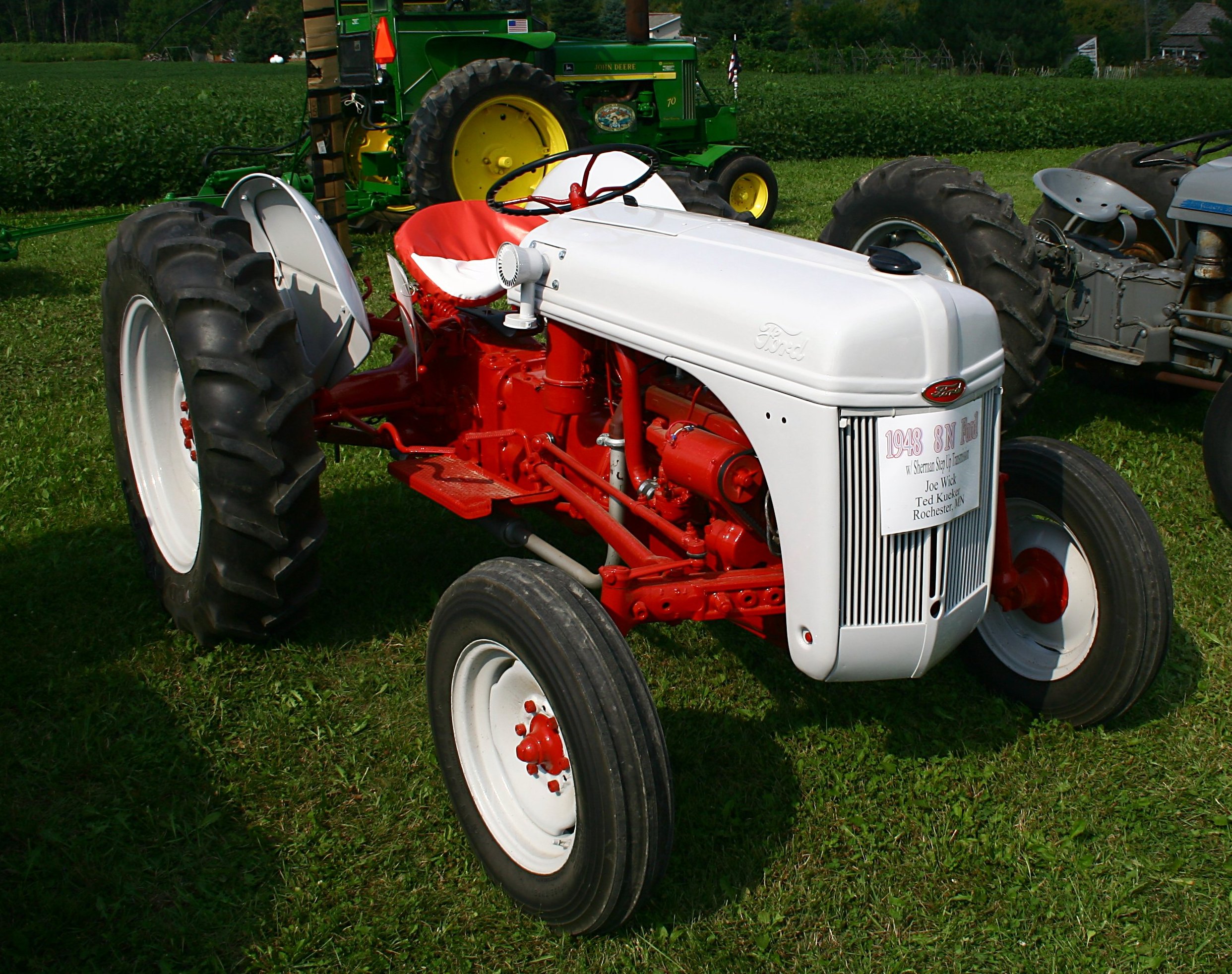|
Monocultures
In agriculture, monoculture is the practice of growing one crop species in a field at a time. Monocultures increase ease and efficiency in planting, managing, and harvesting crops short-term, often with the help of machinery. However, monocultures are more susceptible to diseases or pest outbreaks long-term due to localized reductions in biodiversity and nutrient depletion. Crop diversity can be added both in time, as with a crop rotation or sequence, or in space, with a polyculture or intercropping. Monocultures appear in contexts outside of agriculture and food production. Grass lawns are a common form of residential monocultures. Several monocultures, including single-species forest plantations, have become increasingly abundant throughout the tropics following market globalization, impacting local communities. Genetic monocultures refer to crops that have little to no genetic variation. This is achieved using cultivars, made through processes of propagation and selective br ... [...More Info...] [...Related Items...] OR: [Wikipedia] [Google] [Baidu] |
Polyculture
In agriculture, polyculture is the practice of growing more than one crop species together in the same place at the same time, in contrast to monoculture, which had become the dominant approach in developed countries by 1950. Traditional examples include the intercropping of the Three Sisters (agriculture), Three Sisters, namely maize, beans, and Cucurbita, squashes, by indigenous peoples of Central and North America, the rice-fish systems of Asia, and the complex mixed cropping systems of Nigeria. Polyculture offers multiple advantages, including increasing total yield, as multiple crops can be harvested from the same land, along with reduced risk of crop failure. Resources are used more efficiently, requiring less inputs of fertilizers and pesticides, as interplanted crops suppress weeds, and legumes can Nitrogen fixation, fix nitrogen. The increased diversity tends to reduce losses from Pest control, pests and plant diseases, diseases. Polyculture can yield multiple harvests ... [...More Info...] [...Related Items...] OR: [Wikipedia] [Google] [Baidu] |
Crop Rotation
Crop rotation is the practice of growing a series of different types of crops in the same area across a sequence of growing seasons. This practice reduces the reliance of crops on one set of nutrients, pest and weed pressure, along with the probability of developing resistant pests and weeds. Growing the same crop in the same place for many years in a row, known as monocropping, gradually depletes the soil of certain nutrients and promotes the proliferation of specialized pest and weed populations adapted to that crop system. Without balancing nutrient use and diversifying pest and weed communities, the productivity of monocultures is highly dependent on external inputs that may be harmful to the soil's fertility. Conversely, a well-designed crop rotation can reduce the need for Fertilizer, synthetic fertilizers and herbicides by better using ecosystem services from a diverse set of crops. Additionally, crop rotations can improve soil structure and Soil organic matter, organic m ... [...More Info...] [...Related Items...] OR: [Wikipedia] [Google] [Baidu] |
Intensive Farming
Intensive agriculture, also known as intensive farming (as opposed to extensive farming), conventional, or industrial agriculture, is a type of agriculture, both of arable farming, crop plants and of Animal husbandry, animals, with higher levels of input and output per unit of agricultural land area. It is characterized by a low :wikt:fallow, fallow ratio, higher use of inputs such as Capital (economics), capital, Labour (economics), labour, agrochemicals and water, and higher crop yields per unit land area. Most commerce, commercial agriculture is intensive in one or more ways. Forms that rely heavily on industrial engineering, industrial methods are often called industrial agriculture, which is characterized by technologies designed to increase yield. Techniques include planting multiple crops per year, reducing the frequency of fallow years, improving cultivars, mechanised agriculture, controlled by increased and more detailed analysis of growing conditions, including weather, ... [...More Info...] [...Related Items...] OR: [Wikipedia] [Google] [Baidu] |
Tractors In Potato Field
A tractor is an engineering vehicle specifically designed to deliver a high tractive effort (or torque) at slow speeds, for the purposes of hauling a trailer or machinery such as that used in agriculture, mining or construction. Most commonly, the term is used to describe a farm vehicle that provides the power and traction to mechanize agricultural tasks, especially (and originally) tillage, and now many more. Agricultural implements may be towed behind or mounted on the tractor, and the tractor may also provide a source of power if the implement is mechanised. Etymology The word ''tractor'' was taken from Latin, being the agent noun of ''trahere'' "to pull". The first recorded use of the word meaning "an engine or vehicle for pulling wagons or plows" occurred in 1896, from the earlier term " traction motor" (1859). National variations In the UK, Ireland, Australia, India, Spain, Argentina, Slovenia, Serbia, Croatia, the Netherlands, and Germany, the word "tractor" u ... [...More Info...] [...Related Items...] OR: [Wikipedia] [Google] [Baidu] |
Agronomy (journal)
This is a list of academic journals published by MDPI. As of September 2022, MDPI publishes 399 Peer-reviewed journal, peer-reviewed academic journals and nine Academic conference, conference journals. {, class="wikitable sortable" , +List of MDPI journals !Journal name !Subject !Established !ISSN , - , ''Acoustics'' , Engineering , 2019 , 2624-599X , - , ''Actuators'' , Engineering , 2012 , 2076-0825 , - , ''Administrative Sciences'' , Business , 2011 , 2076-3387 , - , ''Adolescents'' , Health , 2021 , 2673-7051 , - , ''Advances in Respiratory Medicine'' (formerly ''Pneumonologia i Alergologia Polska)'' , Health , , 2451-4934 , - , ''Aerospace'' , Engineering , 2014 , 2226-4310 , - , ''Agriculture'' , Agriculture , 2011 , 2077-0472 , - , ''AgriEngineering'' , Agriculture , 2019 , 2624-7402 , - , ''Agronomy'' , Agriculture , 2011 , 2073-4395 , - , ''AI'' , Computers , 2020 , 2673-2688 , - , ''Algorithms (journal), Algorithms'' , Mathematics , 2008 , 1999-4893 , - , ''Allerg ... [...More Info...] [...Related Items...] OR: [Wikipedia] [Google] [Baidu] |
Soil Acidification
Soil acidification is the buildup of hydrogen cations, which reduces the soil pH. Chemically, this happens when a proton donor gets added to the soil. The donor can be an acid, such as nitric acid, sulfuric acid, or carbonic acid. It can also be a compound such as aluminium sulfate, which reacts in the soil to release protons. Acidification also occurs when base cations such as calcium, magnesium, potassium and sodium are leached from the soil. Soil acidification naturally occurs as lichens and algae begin to break down rock surfaces. Acids continue with this dissolution as soil develops. With time and weathering, soils become more acidic in natural ecosystems. Soil acidification rates can vary, and increase with certain factors such as acid rain, agriculture, and pollution. Causes Acid rain Rainfall is naturally acidic due to carbonic acid forming from carbon dioxide in the atmosphere. This compound causes rainfall pH to be around 5.0–5.5. When rainfall has a lower pH than n ... [...More Info...] [...Related Items...] OR: [Wikipedia] [Google] [Baidu] |
Soil Retrogression And Degradation
Soil retrogression and degradation are two regressive evolution processes associated with the loss of equilibrium of a stable soil. Retrogression is primarily due to soil erosion and corresponds to a phenomenon where succession reverts the land to its natural physical state. Degradation or ''pedolysis'' is an evolution, different from natural evolution, related to the local climate and vegetation. It is due to the replacement of primary plant communities (known as climax vegetation) by the secondary communities. This replacement modifies the humus composition and amount, and affects the formation of the soil. It is directly related to human activity. Soil degradation may also be viewed as any change or ecological disturbance to the soil perceived to be deleterious or undesirable.Johnson, D.L., S.H. Ambrose, T.J. Bassett, M.L. Bowen, D.E. Crummey, J.S. Isaacson, D.N. Johnson, P. Lamb, M. Saul, and A.E. Winter-Nelson. 1997. Meanings of environmental terms. Journal of Environmen ... [...More Info...] [...Related Items...] OR: [Wikipedia] [Google] [Baidu] |
Soil Borne Pathogen
A soil borne pathogen is a disease-causing agent which lives both in soil and in a plant host, and which will tend to infect undiseased plants which are grown in that soil. Common soil borne pathogens include ''Fusarium'', '' Pythium'', '' Rhizoctonia'', ''Phytophthora'', '' Verticillium'', '' Rhizopus'', '' Thielaviopsis'', and nematode The nematodes ( or ; ; ), roundworms or eelworms constitute the phylum Nematoda. Species in the phylum inhabit a broad range of environments. Most species are free-living, feeding on microorganisms, but many are parasitic. Parasitic worms (h ...s including '' Meloidogyne''. References {{plant-disease-stub Soil science Plant pathogens and diseases ... [...More Info...] [...Related Items...] OR: [Wikipedia] [Google] [Baidu] |
Frontiers In Ecology And The Environment
''Frontiers in Ecology and the Environment'' is a peer-reviewed scientific journal issued ten times per year, and consists of peer-reviewed, synthetic review articles on all aspects of ecology, the environment, and related disciplines, as well as short, high-impact research communications of broad interdisciplinary appeal. Additional features include editorials, commentaries, a letters section, Life Lines, job ads, and special columns. It is published by Wiley-Blackwell on behalf of the Ecological Society of America (ESA). According to the ''Journal Citation Reports'', the journal has a 2021 impact factor of 13.780, ranking it eleventh out of 279 journals in the category "Environmental Sciences" and fourth out of 174 journals in the category "Ecology". Aims and scope ''Frontiers in Ecology and the Environment'' is a benefit of membership of the ESA. International in scope and interdisciplinary in approach, ''Frontiers'' focuses on current ecological issues and environmental ch ... [...More Info...] [...Related Items...] OR: [Wikipedia] [Google] [Baidu] |
Extractivism
Extractivism is the removal of natural resources particularly for export with minimal processing. This economic model is common throughout the Global South and the Arctic region, but also happens in some sacrifice zones in the Global North in European extractivism. The concept was coined in Portuguese as "extractivismo" in 1996 to describe the for-profit exploitation of forest resources in Brazil. Many actors are involved in the process of extractivism. These mainly include Multinational corporation, transnational corporations (TNCs) as the main players, but are not limited to them, because they also include the government and some (chiefly economic) community members. Trends have demonstrated that countries do not often extract their own resources; extraction is often led from abroad. Extractivism is controversial because it exists at the intersection where economic growth and environmental protection meet. This intersection is known as the green economy. Extractivism has evolve ... [...More Info...] [...Related Items...] OR: [Wikipedia] [Google] [Baidu] |
Critical Reviews In Plant Sciences
Critical or Critically may refer to: *Critical, or critical but stable, medical states **Critical, or intensive care medicine * Critical juncture, a discontinuous change studied in the social sciences. *Critical Software, a company specializing in mission and business critical information systems *Critical theory, a school of thought that critiques society and culture by applying knowledge from the social sciences and the humanities *Critically endangered, a risk status for wild species *Criticality (status), the condition of sustaining a nuclear chain reaction Art, entertainment, and media * ''Critical'' (novel), a medical thriller written by Robin Cook * ''Critical'' (TV series), a Sky 1 TV series * "Critical" (''Person of Interest''), an episode of the American television drama series ''Person of Interest'' *"Critical", a song by Abhi the Nomad from the album ''Abhi vs the Universe'', 2021 *"Critical", a 1999 single by Zion I from the album '' Mind over Matter'' People *Cr1TiKa ... [...More Info...] [...Related Items...] OR: [Wikipedia] [Google] [Baidu] |
Land Use Policy
''Land use policy'' is a monthly peer-reviewed scientific journal covering various aspects of land use research. It is published by Elsevier and was established in 2004. The editors-in-chief are Uchendu Chigbu (Namibia University of Science and Technology) and Xiaoling Zhang (University of Hong Kong). The journal publishes research articles, reviews, and commentaries related to rural land use, including land use policies, geography, agriculture, and forestry. Abstracting and indexing The journal is abstracted and indexed in: According to the ''Journal Citation Reports'', the journal has a 2022 impact factor The impact factor (IF) or journal impact factor (JIF) of an academic journal is a type of journal ranking. Journals with higher impact factor values are considered more prestigious or important within their field. The Impact Factor of a journa ... of 7.1. References External links * {{Authority control English-language journals Elsevier academic journals Academi ... [...More Info...] [...Related Items...] OR: [Wikipedia] [Google] [Baidu] |




